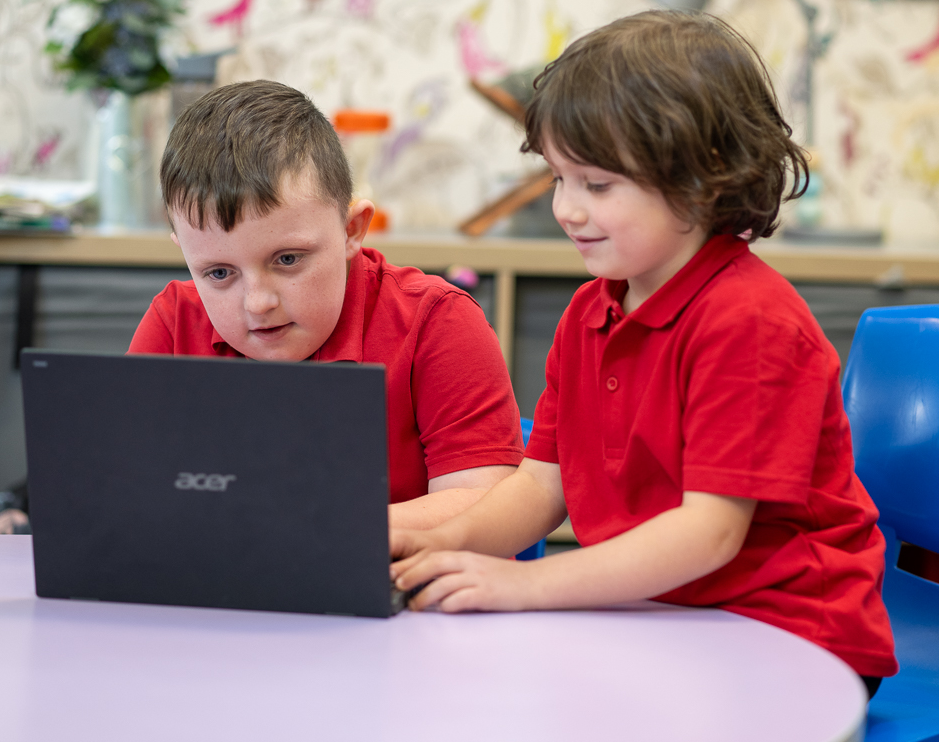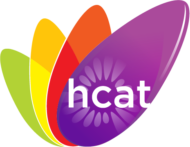Computing

Curriculum Intention
Intent
At Thoresby Primary School our Computing curriculum is designed to prepare children for an ever-changing digital world. We aim to foster a love of all areas of computing and equip students with the skills, confidence, and drive to succeed within the computing framework. Computational thinking is a key skill within computing, and this teaches our students the resilience and problem-solving skills to tackle difficult problems in all aspects of life. Knowledge and skills are built up progressively and sequenced in a way that allows pupils to build on their understanding year on year. Students are taught key computing skills which are then applied through engaging and purposeful projects, allowing them to demonstrate their understanding, and to see the importance of computing in the wider world. Through the Computing curriculum children will be taught how to keep themselves safe within the digital world as well as how to be responsible users of technology.
Implementation
A range of strategies are used within lessons to ensure that computing is accessible to all pupils. Our scheme of work for Computing is adapted from the ‘Teach Computing’ Curriculum and covers all aspects of the National Curriculum. This scheme was chosen as it has been created by subject experts and based on the latest pedagogical research providing an innovative, progressive framework which carefully considers each strand of computing – Digital Literacy (including Online Safety), Information Technology and Computer Science. The curriculum is broad, balanced and challenges pupils in accordance with the National Curriculum. This ensures that children become confident and responsible users of technology, and they are able to safely express their ideas. Our pupils will be able to manipulate and create a range of digital content and know how digital systems work in order to program these themselves.
The curriculum aims to equip young people with the knowledge, skills and understanding they need to thrive in the digital world of today and the future. The curriculum can be broken down into 3 strands: computer science, information technology and digital literacy, with the aims of the curriculum reflecting this distinction.
The national curriculum for computing aims to ensure all pupils:
- can understand and apply the fundamental principles and concepts of computer science, including abstraction, logic, algorithms and data representation (Computer science)
- can analyse problems in computational terms, and have repeated practical experience of writing computer programs in order to solve such problems (Computer science)
- can evaluate and apply information technology, including new or unfamiliar technologies, analytically to solve problems (Information technology)
- are responsible, competent, confident and creative users of information and communication technology. (Digital literacy)
To help with our implementation of the computing curriculum we have a variety of hardware available to all pupils, including:
- 2 class sets of laptops
- 30 Tablets
- 25 Crumble Kits
- 25 Microbits
- 7 Beebots
The computing curriculum is also supported with the use of individual pupil access to Purple Mash for years 1-4. Purple Mash is an award-winning cross-curricular website for nursery and primary school children enabling pupils to explore and enhance their knowledge in a fun and creative way.
Pupils in years 5 & 6 have individual access to Office 365 allowing for creativity, promoting teamwork, and providing a simple and safe platform to access digital content.
Impact
- Children demonstrate good computing skills and apply their computing understanding to cross-curricular projects.
- Children develop skills that will enable them to use technology responsibly and effectively within society.
- Children are prepared for an ever-changing society and will develop problem-solving skills from computational thinking to allow them to approach difficult tasks with high-levels of resilience.
E-Safety and Digital Citizenship
A key part of implementing our computing curriculum was to ensure that the safety of our pupils is paramount. We take online safety very seriously and we aim to give children the necessary skills to keep themselves safe online. Children have a right to enjoy childhood online, to access safe online spaces and to benefit from all the opportunities that a connected world can bring them, appropriate to their age and stage.
Children build online resilience through the use of the ‘Project Evolve – Education for a Connected World’ framework. The framework aims to support and broaden the provision of online safety education, so that it is empowering, builds resilience and effects positive culture change. The objectives promote the development of safe and appropriate long-term behaviours, and support educators in shaping the culture within their setting and beyond.
Within each year group topics include:
- Self-Image and Identity – Exploring the differences between online and offline identity beginning with self-awareness, shaping online identities and media influence in propagating stereotypes. It identifies effective routes for reporting and support and explores the impact of online technologies on self-image and behaviour.
- Online Relationships – Exploring how technology shapes communication styles and identifies strategies for positive relationships in online communities. It offers opportunities to discuss relationships, respecting, giving and denying consent and behaviours that may lead to harm and how positive online interaction can empower and amplify voice.
- Online Reputation – Exploring the concept of reputation and how others may use online information to make judgements. It offers opportunities to develop strategies to manage personal digital content effectively and capitalise on technology’s capacity to create effective positive profiles.
- Online Bullying – Exploring bullying and other online aggression and how technology impacts those issues. It offers strategies for effective reporting and intervention and considers how bullying and other aggressive behaviour relates to legislation.
- Managing Online information – Exploring how online information is found, viewed and interpreted. It offers strategies for effective searching, critical evaluation of data, the recognition of risks and the management of online threats and challenges. It explores how online threats can pose risks to our physical safety as well as online safety. It also covers learning relevant to ethical publishing.
- Health Well-being and Lifestyle – Exploring the impact that technology has on health, well-being and lifestyle e.g. mood, sleep, body health and relationships. It also includes understanding negative behaviours and issues amplified and sustained by online technologies and the strategies for dealing with them.
- Privacy and Security – Exploring how personal online information can be used, stored, processed and shared. It offers both behavioural and technical strategies to limit impact on privacy and protect data and systems against compromise.
- Copyright and Ownership – Exploring the concept of ownership of online content. It explores strategies for protecting personal content and crediting the rights of others as well as addressing potential consequences of illegal access, download and distribution.



